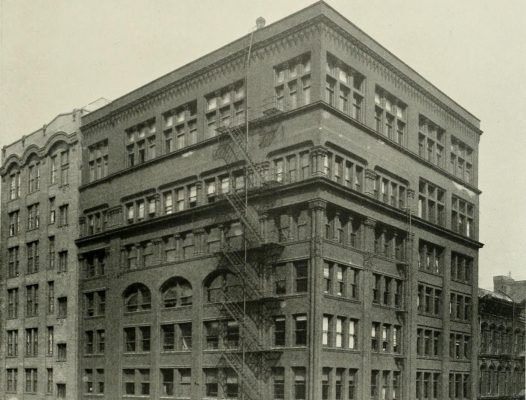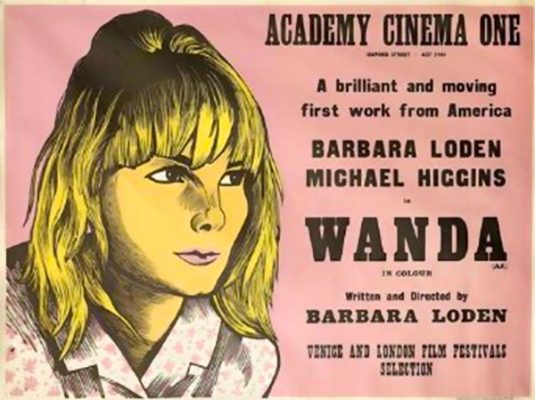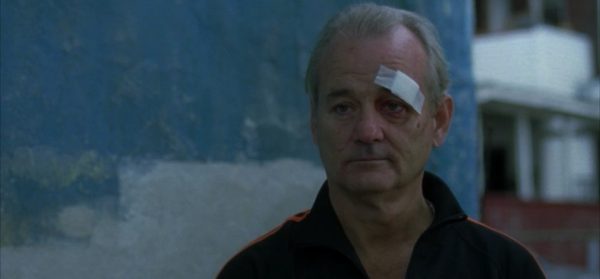I’ve had the privilege of knowing Margo Jefferson since 2011, when I took her class, The Critic As Artist, as a student in Columbia’s graduate writing programme. I’d thought I knew all there was to know about Walter Benjamin, until she had us read Berlin Childhood Around 1900, where I was introduced to the idea that a writer’s life was worthy of detailed study; that it can illuminate their work when placed alongside it. It was to my great surprise and delight when, in her 2015 memoir Negroland, Jefferson placed her own life — a childhood in Chicago’s black elite and an accomplished adulthood in journalism (she won the Pulitzer Prize for criticism in 1995) — under the scan of her unrelenting eye. When it was published, I had been out of grad school a couple of years, had moved away and hadn’t seen her for as long, though I had already torn through her first book, On Michael Jackson, after reading everything of hers I could find online. Reading Negroland was like opening a portal into her mind, and just like Benjamin’s Berlin Childhood, it offered new insights into a thinker I thought I already knew. It also taught me something about myself as a woman and a writer. I was so excited by it that I couldn’t wait until I’d finished reading to tell her how much I loved it. ‘It makes sense,’ I wrote to her in an email, ‘that in your memoir you would act as a critic — as black women, we are constantly forced to see ourselves through others’ eyes, and thus become critics of our own lives. This is something I have always felt on some level, but confronted it in your book as plain truth.’ Jefferson’s work has not only challenged me to think about works of art more deeply, but to do the same in regards to my own life. For that, I, and her many readers, will always be grateful.

share
Interview with Margo Jefferson
Q
The White Review
— A lot of your work investigates unexplored aspects of various identities, but primarily of race and gender. I might describe your project as arguing for nuance in order to rethink identity. You did it in On Michael Jackson, by connecting the dots of his personality and drawing attention to our blind spots about his persona. And you filled in a picture of black womanhood in Negroland by talking about privilege and vulnerability. In your essay about Nella Larsen, this is something that you say explicitly: that we need to abandon old notions of authenticity in regards to race, in regards to craft, and also in regards to how we think of people. There’s a quote in Negroland that comes amidst a section where you discuss suicide: ‘I found literary idols in Adrienne Kennedy, Nella Larsen, and Ntozake Shange, writers who’d dared to locate a sanctioned, forbidden space between white vulnerability and black invincibility.’ Is this a conscious part of your project, or is it something that filters in unconsciously from your lived experience?
A
Margo Jefferson
— I think it’s both. When I was starting out it was probably instinctual. I thought of myself as a progressive black feminist, so that meant I had a class analysis, a race analysis, and a gender analysis. But these particulars about identity and what’s authentic and what’s not — I followed my instincts with those. I began to think about them partly because they were enormously interesting to me, and some of that was autobiographical. I had grown up intellectually, socially, and also emotionally, in these spaces that bordered on neighbourhoods of various identities. That family down the block could be completely different. So I had to keep trying to make analytic and emotional sense of that, and if I didn’t keep analysing it, then a couple of things could have happened. One, I could have gotten very class defensive about it, which was the last thing I was interested in doing — shifting into black respectability, into a conservative stance. That seems an unlikely position for me to have been tempted by, but criticism always tempts you towards certain kinds of lofty stances. The other thing, which is almost its opposite, is that I wanted to find a place for myself. I did not want to pretend to be, you know, more ‘street’ in origin than I was — I didn’t want to come up with performances of what I was calculating and sometimes seeing as the preferred authentic stances. So I had to find a legitimate space. And I had to find allies, of course, in that space. I was once having a conversation with Adrienne Kennedy about this, and we agreed that both of us, in our work, wanted to find a fixed space for black culture — and our culture, which was mixed within that — at the centre of white culture. That was our quest.
Q
The White Review
— You’ve used the term ‘cultural mulatto’ in your criticism, and it’s been used to describe you as well. The term ‘mulatto’ itself isn’t used much today, but I think ‘cultural mulatto’ is still very much present. Do you still see that concept showing up today, and where do you see that conversation that you started with Adrienne Kennedy now?
A
Margo Jefferson
— The term is tricky, so let’s instead think about concept, because it doesn’t work in every context. You can’t use a word like ‘mulatto’, or ‘coloured’, or ‘Negro’ without surrounding it with explications and qualifications that make very clear that you are stripping it of certain things and supplying it with certain others. You’re revising it and renovating it. I would say that intersectionality is in many ways a more sophisticated take on — or an extension of — what we might call cultural mulatto-ism. I’m thinking particularly in culture and the arts. But one could say the same thing in terms of politics. There are so many kinds of mixed people now, people of colour who are mixed in various ways. We’re just really beginning to quantify and analyse and emotionally dissect that. I think that’s very, very fruitful. I encountered it a lot in England, with Caribbean blacks, with South Asians. Whenever I talked to Latinx critics, women in particular. Writers are continually probing and dramatising those states, and that move from what appears to be certainty to uncertainty. These identity changes, not in terms of tragedy, but negotiations. Code switching is a term I’m getting tired of, but code switching. And also understanding that that is a performance that’s crucial to who you are. It’s performance as a form of truth, not of lying. It’s very tied to a different notion of authenticity which really now does include a sense of constructed, inherited identity that keeps reconstructing, and that you can negotiate and perform with. I mean, isn’t that what we think of as identity these days? It doesn’t mean it’s any less deeply felt.
Q
The White Review
— I think that, as time goes on, identity will increasingly be constituted performatively as we move away from biological links, in terms of gender and race and everything else. For example, because of our habits online, we’re beginning to be defined much more by our interests, by the people we’re friends with, and our politics.
A
Margo Jefferson
— And also, class was never biological, though it’s been linked to biology. That’s a huge factor as well that inflects every one of these mixtures.
Q
The White Review
— In the 1977 documentary Some American Feminists, you gave a very good definition of what we would today define as intersectionality. I wonder how you engage with that theory? Also, I have a feeling that as a critic you might be resistant to labels such as intersectionality. What perhaps attracts you to that theory, and what might give you reservations about it?
A
Margo Jefferson
— In terms of what I’ve read of it, I’m really unreservedly attracted to intersectionality. It just seems, to me, to be a kind of theorisation or formalisation of all the things we’ve been talking about. It seems like a basic tool for understanding identities, and also clashes. If each of our intersectional structures could be visible, like architectural structures or movable sculptures, we would be able to see much more clearly. It would almost be like being able to read blueprints, or a doctor being able to read X-rays. But in terms of the language, have I used it much? I don’t know that I have. In Negroland, I say race, class, gender, I call it my secular trinity. I was probably feeling, and that does address your language question, that where I was writing and in terms of the voice I was using, it would have sounded a little stilted, as if I was trying for a certain kind of intellectual properness. I don’t think that would have to be the case in everything I write, by any means. It would depend on the essay and the subject. I try to be quite responsible, as a journalist and as a critic, to pay attention to more theoretical and scholarly materials, and I’m not against using them at all. But I just have to be very careful tonally with how they work in terms of my prose. So I don’t want to seem to be showing off. I don’t want to sound unduly laborious. It’s just a negotiation for me.Q
The White Review
— Sometimes when we use rhetoric and terminology to stand in for ideas, they can be misused. And I wonder if, as a critic and someone with a sharp mind who is used to questioning, that might be part of why you’ve chosen not to use the term? In many ways, your entire body of work explains that term, it’s almost redundant to use it.
A
Margo Jefferson
— That’s very nice. You made a good point. Rhetoric, including rhetoric that people you very much respect have all agreed on, jumps up and jumps out. It can alter the landscape of your prose and it can change the degrees in subtlety. As a critic, it can even change your position. It can also just get stale. There was a certain period when more general media critics and journalists got very excited about using ‘deconstruct’, and it started turning into a little winking cliche that was supposed to do the work for you.Q
The White Review
— Kimberlé Crenshaw introduced ‘intersectionality’ in a paper published in 1989, and it started to be used in the nineties, and I feel it’s reached a saturation point today, almost thirty years later. But you’re proof that its principles were widely held beforehand, and it’s important to consider its history — or perhaps pre-history.A
Margo Jefferson
— The work and words of black feminists came before its coining. What is black feminist analysis but a real documentation and insistence on the power and the place and the precedents of intersectionality? That was happening, and I was learning from it and taking from it, and also using my own words. That was the core strength of the black feminist analysis that was being worked on.This is an excerpt from The White Review No. 23. The issue is available to buy here.
share
ABOUT THE CONTRIBUTOR
ZINZI CLEMMONS was raised in Philadelphia by a South African mother and an American father. Her debut novel, What We Lose (Viking 2017) was a finalist for the Aspen Words Literary Prize, a Hurston/Wright Legacy Award, and the National Book Critics Circle Leonard Prize. She is a 2017 National Book Award 5 Under 35 Honoree. She wrote the foreword for a new edition of Jean Toomer’s Cane, forthcoming from Penguin Classics in 2019. She is a professor of English at Occidental College in Los Angeles.
READ NEXT



